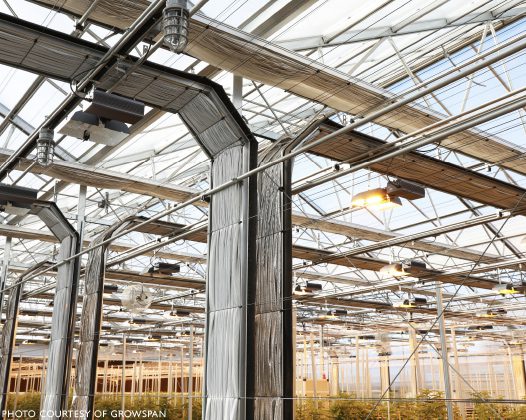Light deprivation, or “light dep.” for short, refers to using methodology which allows a grower to manipulate the amount of light (or dark) hours available to sun-grown plants. There are a several reasons why a grower may want to consider using these techniques. There are also a few key ways to go about providing an additional dark period for cannabis plants grown outdoor–some automated, some labor intensive.
In Eugene, Oregon, our farm is located at approximately the 45th parallel, or about halfway between the Equator and the North Pole. At this latitude, our plants can go outside at the end of May as, by then, the days have become long enough and dark period short enough, so that we can remain in the vegetative period. Then, most strains are in full pre-flower mid-August. Using this schedule, we can grow giant plants with astronomic yields. What could possibly be better than that?
If, however, we wanted to make the most of the time we have in a summer season, May 21st to approximately October 21st, we can use light dep to run one cycle from late May to late July, and another from late July to finish. Although this method will work fine with clones or seedlings, there are those who are able to use an indoor area to veg both cycles of plants indoors so that they can maximize their yield.
There is something to be said for the quality of cannabis that comes from smaller plants. Maybe it’s that there is less vegetative matter to deal with, or less time for something to go wrong, but it just seems like smaller plants tend to be of a slightly higher caliber when comparing finished product to their giant counterparts. There is also a huge benefit to splitting your harvest: you will end up with the same amount of finished weight (or more) in growing two cycles of smaller plants while mitigating the risk of weather-related loss as well such as mold or rot at the end of the natural season. In other words, it’s easier to lose less if there is less to lose.
Getting down to brass tacks, how do the mechanics of light dep actually work? In the simplest of explanations, you pull a black-out tent over your plants for a period of time per day in order to add a dark period to balance a 12/12 dark & light cycle and to trigger and maintain the flowering cycle. A savvy old timer once told me an even easier way:
“On the first day, I start with the black-out tarps in place when the sun comes up and remove them 12 hours prior to dark, so maybe 10 am,” they told me. “Then the plants will get 12 hours of sun, followed by 12 hours of dark. I then pull the tarps in place 12 hours from sunrise on the end of the 2nd day, so 6:30 pm, for example. Repeat in two-day cycles.”

There are dozens of ways to do this but, for simplicity, a grower could start with a hoop house-type framework and pull black plastic over it, wrapping the ends like a Christmas present every night at the 12-hour mark from sunrise. Using this procedure, the grower should then remove the cover either the same evening when it is completely dark out, or the following morning as the sun comes up. The major drawback to this rudimentary method: although your plants are in the dark as desired, they are also without fresh air and temperature control, so care must be exercised to make sure that the plants don’t suffer damage.
As gardens become more complex, opportunities for more streamlined light deprivation systems become possible. Someone with a large green house, for example, can use either a manual or automatic system which utilizes hand or motor driven cranks and lift arms to place the black-out tarps over the greenhouse or even on tracks across the interior. The most elaborate of contemporary greenhouses include automatic darkening panels which use an electrochemical reaction between two panes of glass or polycarbonate. These can be used with timers or sensors in order to automate the process. Whether rudimentary or elaborate, the systems work best when they don’t have any light leaks.
If high quality, sun-grown cannabis is what you are looking for, consider light deprivation as a means to put the odds in your favor.

